10 Easiest Instruments To Learn Late In Life
Senior citizens have lots of time on their hands. They are retired with little or nothing to do besides watching the TV and looking out the window. They pine for the days of their youth and their years of service. And most often than not, they wish to do those things which they were not able to do in their active years, like playing musical instruments. The easiest instruments to learn late in life are suitable for seniors aged 55 and above, and they constitute the best instrument to learn at 60.
These instruments will not only keep seniors busy at home, but they will also boost their physical and mental health. These easiest instruments to learn on your own can in some respects be categorized as easiest to hardest instruments to learn, but they are suitable for all classes of learners, especially aged folks. Learning to play an instrument at an older age is exciting and delightful, and it is inspirational to watch senior citizens play musical instruments.
The easiest musical instruments to learn for seniors can also be the easiest instrument to learn for a child. However, there is a methodology applied in ranking learnable instruments for seniors as easy and simple. Let’s examine this methodology below:
Methodology for Ranking Instruments for Seniors in Our Review
We adopted a methodology for ranking the easiest instruments for seniors since this would enable adopters to make informed choices. We reviewed numerous music teaching websites and spoke to many instrument tutors as well as professional music students to arrive at our listing, and many of our analysts agree as to the inclusion of the instruments contained in this list. They do not all agree to the order in which they are listed from 10 to 1, but they agree on their inclusion in this list.
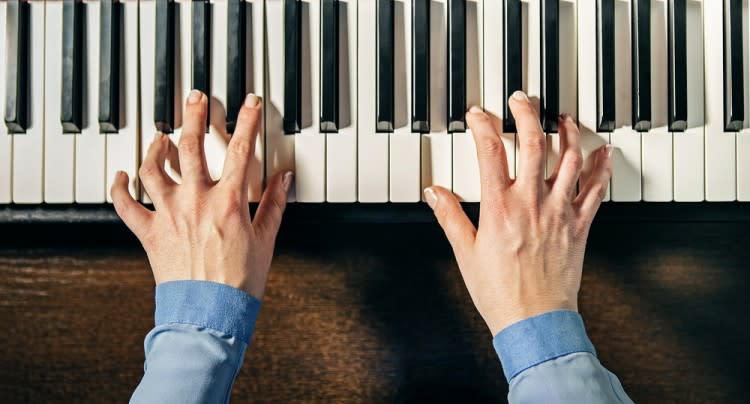
Kobets/Shutterstock.com
A website like LiveAbout even justified why these musical instruments are suitable for seniors to learn and listed factors such as ease of play without physical exertions, cheapness and affordability to purchase, chances of finding a tutor to teach the instruments, the convenience of playing anywhere – in the patio, bedroom, sitting-room, backyard, truck, etc., short time for mastery – from 2-6 weeks, and completeness for stand-alone without the need for accessories.
We also took cognizance of the challenges associated with learning an instrument in old age as revealed in a research paper published in the journal of social and behavioral sciences and even reviewed tips from the London Sound Academy. All our sources and professional reviewers agree that this list would be helpful to old people desirous of learning musical tools in the easiest and fastest as well as the most enjoyable fashion.
Here then are our best picks of the 10 easiest instruments to learn late in life and why they made it into our review:
10. Recorder
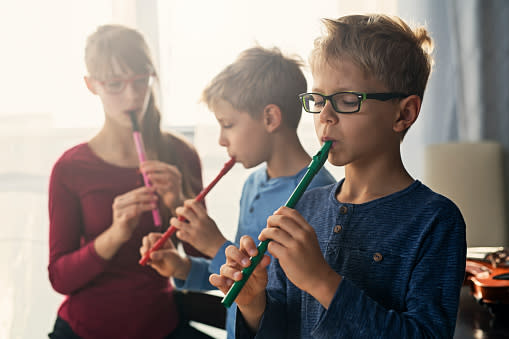
The recorder is a tube-like wind instrument with eight hollow holes where fingers can be placed or lifted to produce desired sounds, and it comes with a mouthpiece into which air is blown. It is considered the simplest and most basic woodwind instrument to play; and this is largely because children in most primary schools learn to play the recorder from infancy. It is very cheap and can fit into one’s pocket and bag with ease, considering that it can be taken apart into two pieces.
Senior citizens can learn to play the recorder by simply coordinating their fingers and breathing on the instrument. They only need to blow differently into the instrument and harmonize their fingers to produce various melodies. Adults can learn or play the recorder seated on their porch, at their backyard, in their living-rooms, and even while perched on a tree-branch. The ability to play the recorder correctly by many primary pupils is self-taught, and older adults can do the same.
9. Drums
A drum is a basic musical percussion instrument. Drumbeats provide tempo and rhythm to any music and are the background of any music. The ability to play the drum is almost natural and instinctive with most people, but it must be learned to achieve professional consistency. Since children can learn to play the drums with ease, adults and aging folks can do the same with ease.
Active drumming is a form of physical exercise and makes the body active, and so recommended for adults interested in it. You can learn how to drum by watching others drum, and you might need a tutor to train you, but you can be assured that you will achieve proficient expertise within a month or two. Senior citizens can even learn with an electronic drum kit since this comes with a headphone, and after some time they graduate from simple beats to more complex drum rolls.
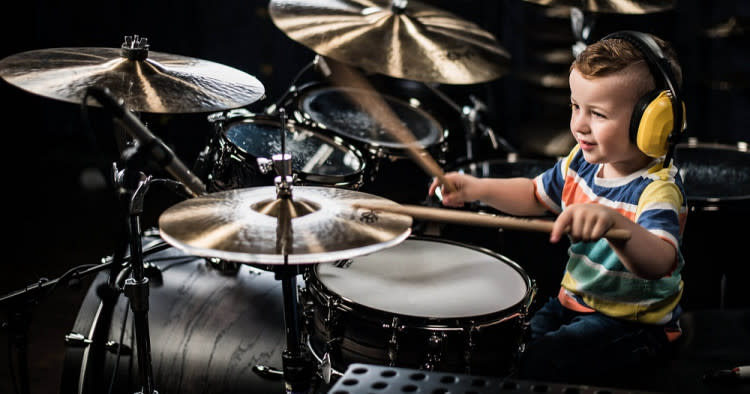
8. Fiddle
If you love the violin, then you must equally love the fiddle. Very similar to the violin, the fiddle is a bowed stringed instrument with four strings played with a bow. It can be played solo or in combination with a violin and other instruments during an orchestra. Anybody with a good hearing, skilled coordination, finger dexterity, and skillful intonation can play the fiddle.
The fiddle remains one of the easiest instruments to learn late in life by senior citizens and children. It can be learned or played at the porch, backyard, and bedroom with ease for a soulful musical experience. In fact, a fiddle features most with musical genres such as folk or country music, classic, jazz, blues, metal, and Celtic. Positioned like a violin on one shoulder and plucked with a bow with the other hand, the fiddle would be great for adults to learn.

7. Harmonica
The harmonica is a small and rectangular metal instrument with two rows of air-holes which produce sounds when air is blown into them. The harmonica is also known as the “mouth organ” since its sounds are almost comparable to that of an organ. The harmonica can serve as a musical accessory that can be played solo, but professional musicians value it greatly because of its adaptability.
This instrument can fit into anyone’s pockets and even played with only one hand. Held to the mouth, the player blows air into any of the holes in the mouth-organ to produce a distinctive sound that could feature in genres such as country, rock and roll, jazz, and classical music. Any child or aged person can produce good music by simply adjusting the amount of air they blow into the instrument by moving their lips and tongue in over the reed holes. It can be played in the car, on the tree, on the housetop, and even in the closet.
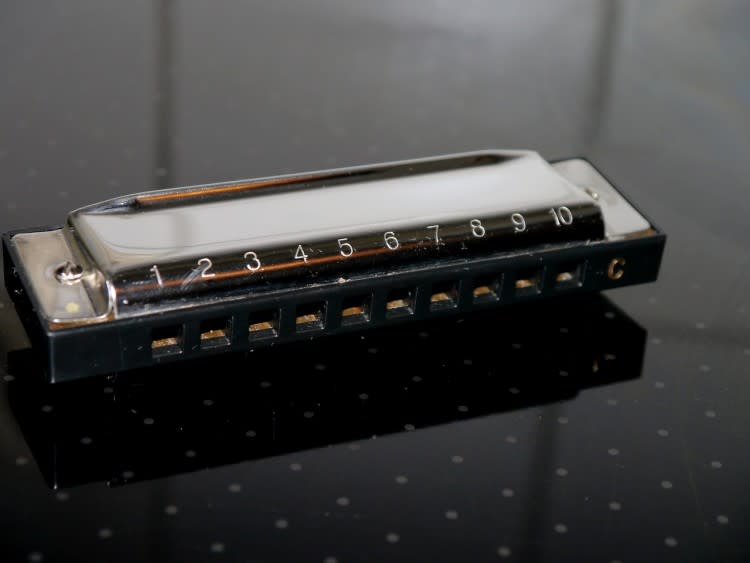
6. Ukulele
If you have a senior citizen interested in guitars but doubtful of their ability to play it, then you must recommend the ukulele to them. The ukulele is a small guitar with four strings – similar to guitars which have six strings. This dainty and portable mini-guitar is ideal for aging adults who want to produce their own music in the security of their homes alone or with others. The ukulele is one of the easiest instruments to play while singing by adults and senior citizens.
A mastery of the ukulele can guarantee a mastery of the guitar over time. It is cheap to procure and durable for a lifetime if handled well. With the dexterity of fingers, the ukulele produces exciting sounds that are pleasant to the ears. With a tutor, senior citizens can learn to play the ukulele in a matter of weeks before graduating to play the guitar with ease.
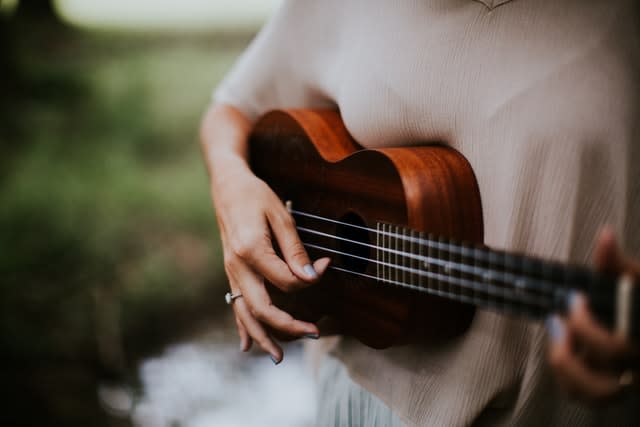
5. Tambourine
There is no way we can recommend the easiest instruments for adults to play in later life without mentioning the tambourine. This is often a round instrument with metallic disks fixed into the sides to produce a small cymbal-like crashing sound when shaken vigorously. It is the easiest and simplest instrument to play because you play it by shaking or banging it. With one hand, hold the tambourine up and shake it in different ways to produce various sounds that could accompany all types of songs, especially choruses.
The tambourine will be easy for senior citizens to play because it does not need to be learned. Anyone can play it by shaking or banging it to accompany the song in progress at the time. Children can also play it by just shaking it to give a rich edge to songs and music. It can be played anywhere in the car, at the store, at churches, during concerts, and at home.

4. Bongos
Similar to large drums, a bongo is a small drum that is played with both hands. You can place it between your knees and beat it rhythmically to produce percussion or sounds that will form the basis of accompanying music. Any child or adult can learn to play the bongos by tapping or beating the instrument. It is usually not as loud or impractical as a complete drum kit, but it can produce a compact experience that is soothing to the ear and appropriate for good music.
The bongo can be learned or played at home and in the church to accompany other musical instruments. Playing it with fervor will provide old people with the physical exercise they need to stay fit and healthy, and it will also serve to keep them mentally fit and expressive for a social life.
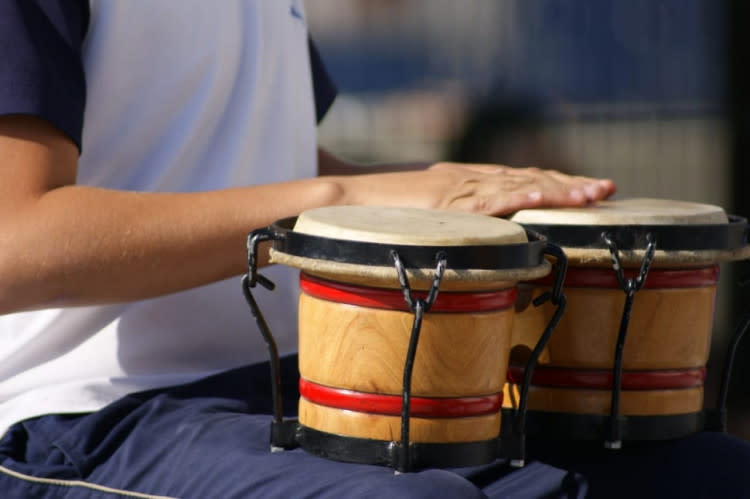
3. Bass guitar
A bass guitar is a type of four-stringed or six-stringed guitar that produces the lowest pitch. Bass guitar produces depth and rhythms to music and that is why it is used in live concerts and studio sessions. With a bass guitar, a guitarist can provide direction to the band and the musician through his background play of the instrument.
Old folks can learn to play the bass guitar because it does not require the vigor of the acoustic guitar to play. By simply strumming the strings, the old player can produce deep sounds that will accompany other instruments to give depth to the music. It can be played at home on the porch, in the music studio, and in churches (see our article about 5 easiest instruments to play in a rock band).

2. Harp
The harp is a triangular stringed instrument that is placed on the lap or on the floor to produce sounds when strummed or plucked with the fingers. Older types of harps are usually placed on the floor before they can be played, but modern harps can be placed on the lap to be played. There are the lever and pedal harps, but they are easy to learn by any adult who is interested in playing stringed instruments.
The harp can be played solo or in accompaniment to other instruments. Senior citizens can learn it at home or with the help of a tutor in a studio. Old folks enjoy playing the harp because it has a religious sentiment since David favored playing the instrument in the Bible.

1. Flute
A flute is a high-pitched tubular wind instrument that is often made with wood. Air is blown into the fipple mouthpiece and fingers are placed on the holes along the slender frame to produce sounds when they are moved in a coordinated manner with blown air. Flutes can be made with wood and they can be made with silver and even platinum; wooden flutes produce lower sounds but silver flutes produce higher pitches.
Just like a recorder, anyone can learn to play the flute regardless of their age. Children and aged folks can play it with ease once they set their minds to it. It requires an ear for music, mental concentration, and finger coordination. It can be played by blowing air into the tube and moving the fingers across the corresponding holes to derive different pitches of sounds. A flute is one of the easiest instruments to learn late in life for adults aged 55 above without any difficulty.
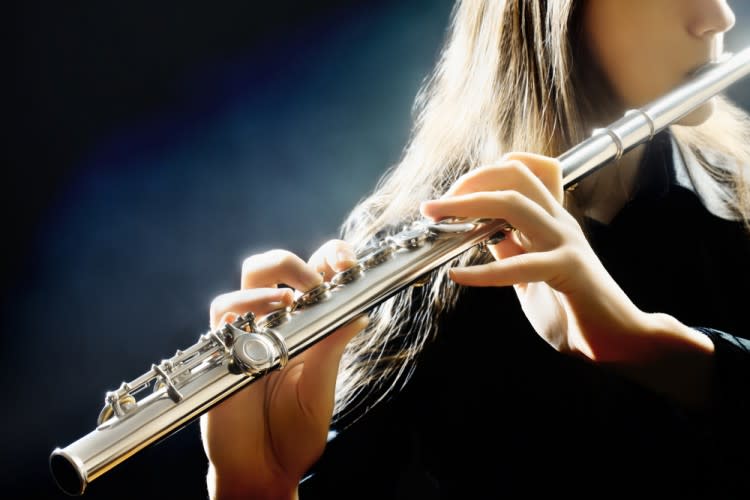
This article is originally published at Insider Monkey.
